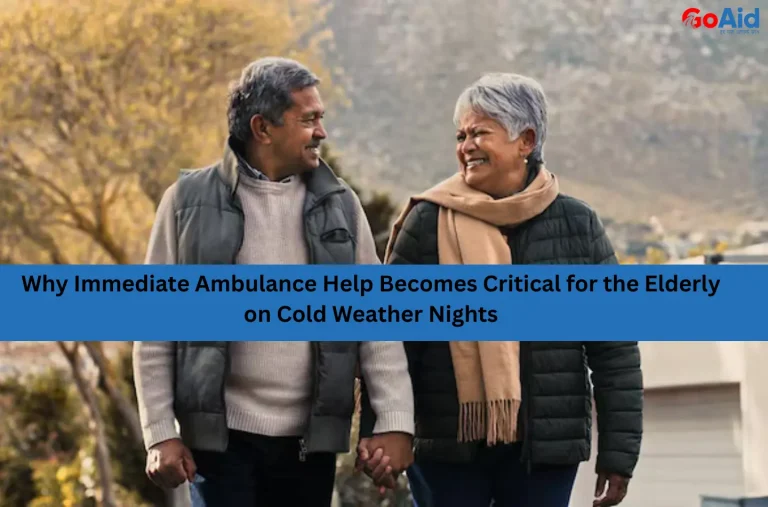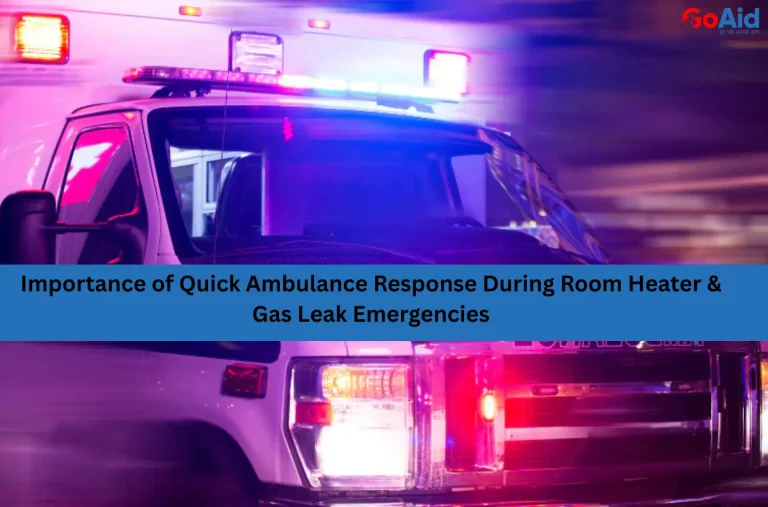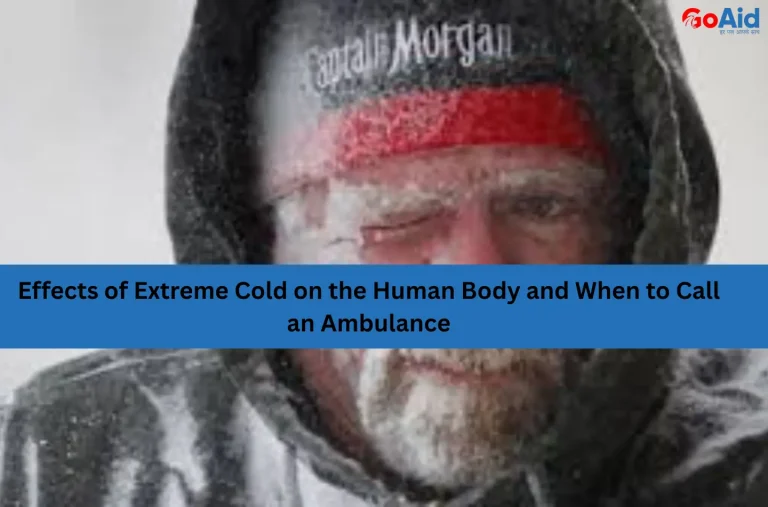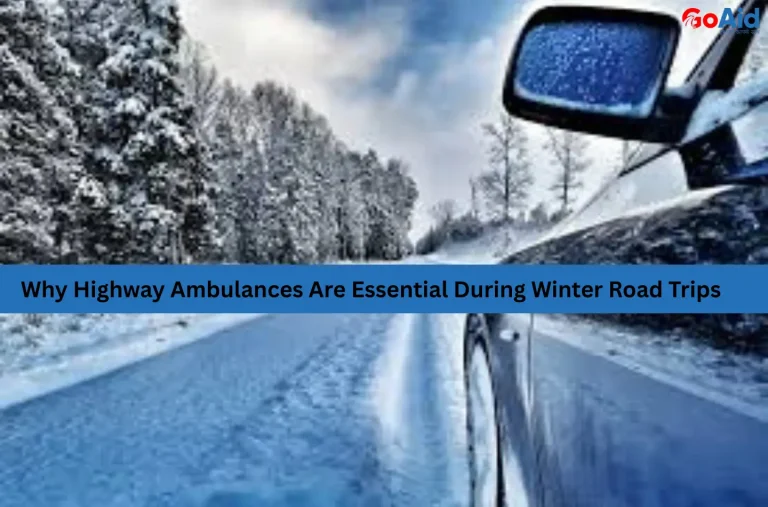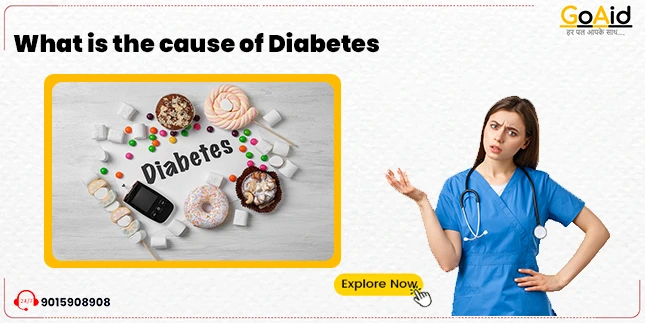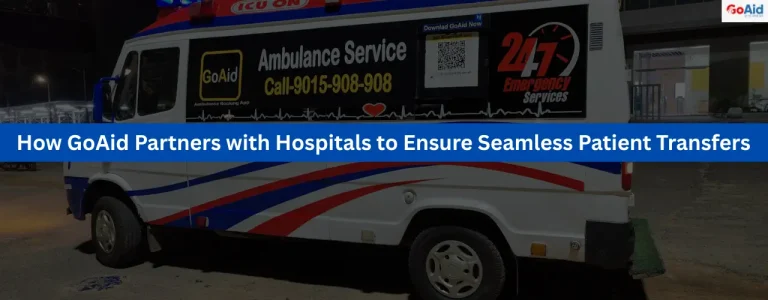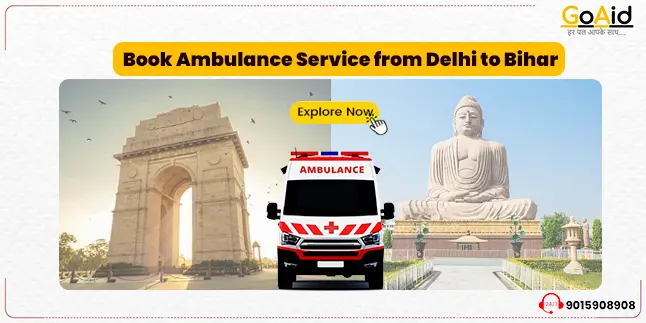Hypoxemia is a medical condition where the oxygen level in your blood falls below normal, which leads to fatigue, confusion, and breathing difficulties. It can result from lung diseases, heart problems, or poor air quality.
In many cases, it becomes a life-threatening emergency requiring immediate medical attention. In India, GoAid Ambulance Service provides quick oxygen ambulance services for patients suffering from low oxygen levels in the blood.
How Does Hypoxemia Affect the Body?
When the body doesnŌĆÖt receive enough oxygen, vital organs such as the brain, heart, and lungs begin to suffer. Hypoxemia causes shortness of breath, dizziness, bluish skin, and confusion due to inadequate oxygen circulation. If not treated quickly, it can lead to organ failure, respiratory distress, or even cardiac arrest.
Long-term low oxygen levels in the blood also damage cells and tissues. Patients with chronic respiratory diseases like COPD or asthma are at higher risk. In such emergencies, GoAid Ambulance Service ensures timely care with advanced oxygen support ambulances, equipped with ventilators and trained paramedics to stabilize patients before reaching the hospital. Their quick response helps prevent severe complications linked to hypoxemia.
Major Causes of Hypoxemia You Should Know
Several underlying conditions can lead to low oxygen levels in the blood, which affect the bodyŌĆÖs ability to function properly. Here are the major hypoxemia causes everyone should be aware of:
- Chronic Lung Diseases: Conditions like asthma, COPD, or pneumonia restrict airflow, reducing oxygen intake and causing persistent hypoxemia symptoms.
- Heart Disorders: Heart failure or arrhythmias affect blood circulation, leading to poor oxygen delivery throughout the body.
- High Altitude Exposure: At higher altitudes, oxygen levels drop, making it difficult for the lungs to absorb enough oxygen, causing low oxygen levels in the blood.
- Sleep Apnea: Interrupted breathing during sleep prevents adequate oxygen supply, resulting in recurring hypoxemia episodes.
- Anemia: Low hemoglobin levels mean less oxygen transport capacity, contributing to hypoxemia in many patients.
- Lung Infections: Severe infections like COVID-19 or tuberculosis inflame the lungs, decreasing their oxygen absorption efficiency.
- Airway Blockage: Choking, allergies, or asthma attacks block air passages, triggering breathing problems and sudden hypoxemia emergencies.
Common Symptoms of Low Blood Oxygen Levels
It is very important to recognize the early hypoxemia symptoms because this can save lives. Low oxygen levels in the blood affect multiple organs, and a timely response is crucial to prevent serious health emergencies.
- Shortness of Breath: Difficulty in breathing is the most common symptom, often requiring an emergency ambulance for breathing problems.
- Bluish Lips or Fingertips: Low oxygen turns skin bluish, signaling severe hypoxemia that needs immediate oxygen support.
- Chest Pain: The heart struggles to pump oxygen-deficient blood, leading to pressure or pain.
- Fatigue and Weakness: Hypoxemia deprives cells of energy, causing extreme tiredness and dizziness.
- Confusion or Disorientation: The brain reacts quickly to low oxygen levels in the blood, leading to memory lapses.
- Rapid Heartbeat: The body compensates for oxygen loss by increasing the heart rate.
- Headache and Restlessness: Prolonged hypoxemia can trigger headaches, anxiety, and sleep troubles.
How the GoAid Ambulance Service in India Helps During Breathing Emergencies
In severe breathing problems or sudden hypoxemia symptoms, timely intervention can save lives. HereŌĆÖs how GoAid Ambulance Service in India provides quick, reliable, and expert care in respiratory emergencies:
- 10-Minute Response Time: GoAid ambulance service ensures ambulances reach your location within 10 minutes, offering immediate medical support for patients with low oxygen levels in the blood.
- Oxygen Support Ambulances: Equipped with oxygen cylinders and concentrators, the GoAid oxygen support ambulance stabilizes patients suffering from hypoxemia or other respiratory issues.
- Advanced Life-Saving Equipment: Every GoAid ambulance has ventilators, suction machines, and pulse oximeters to manage air pollution or hypoxemia-related emergencies.
- Expert Paramedic Team: Trained professionals monitor vital signs and provide first aid during hypoxemia treatment, ensuring patient safety en route.
- Interstate and Intra-City Coverage: GoAid Ambulance Service in India operates across multiple cities, enabling fast transport during breathing emergencies.
- 24/7 Availability: GoAid ambulance service operates round the clock, making it the most dependable option during late-night or sudden respiratory distress.
- Hospital Coordination: The team communicates with hospitals in advance, ensuring quick admission for hypoxemia treatment upon arrival.
- Affordable Pricing: GoAid Ambulance Service offers government-approved rates, making critical care accessible to everyone.
- Multiple Booking Options: Book instantly via the GoAid mobile app or by calling the helpline for quick ambulance dispatch.
- Patient-Centric Approach: GoAid ambulance service prioritizes patient comfort, providing compassionate care during oxygen-related emergencies.
Prevention Tips: How to Avoid Low Oxygen Levels
Preventing hypoxemia starts with maintaining lung health and following healthy lifestyle habits. Here are some practical steps to help you prevent low oxygen levels in blood effectively.
- Exercise Regularly: Engage in light workouts or yoga to strengthen lungs and improve oxygen absorption.
- Avoid Smoking: Smoking damages lung tissues, increasing the risk of hypoxemia and other respiratory diseases.
- Monitor Air Quality: Stay indoors when pollution is high to prevent breathing problems and low oxygen levels.
- Eat Nutritious Foods: Iron-rich foods boost hemoglobin, reducing the risk of oxygen deficiency.
- Use Air Purifiers: Keep indoor air clean to lower the risk of respiratory diseases.
- Regular Checkups: Routine health checkups help detect early signs of hypoxemia symptoms.
- Seek Early Medical Help: Contact GoAid ambulance service during breathing discomfort for immediate medical assistance.
Conclusion to the Understanding of Hypoxemia
Hypoxemia is a serious health condition that requires timely diagnosis and treatment. Recognizing early hypoxemia symptoms like breathlessness or dizziness can prevent severe complications. In emergencies, GoAid Ambulance Service in India provides immediate medical support through its oxygen ambulance service. With trained paramedics and rapid response time, the GoAid ambulance service ensures patients suffering from low oxygen levels in their blood receive quick, life-saving care anytime, anywhere.
FAQs related to the Understanding of Hypoxemia
Question 1: What is hypoxemia?
Answer: Hypoxemia refers to low oxygen levels in the blood, leading to fatigue, confusion, and breathing difficulties that may require oxygen ambulance service support.
Question 2: What are the main causes of hypoxemia?
Answer: The major hypoxemia causes include lung diseases, heart disorders, high altitude, anemia, and airway blockages.
Question 3: What are common symptoms of hypoxemia?
Answer: Key hypoxemia symptoms include breathlessness, bluish lips, confusion, rapid heartbeat, and fatigue due to low oxygen levels in the blood.
Question 4: How is hypoxemia treated?
Answer: Hypoxemia treatment involves oxygen therapy, medications, and medical monitoring. Severe cases may require GoAid oxygen support ambulances for immediate help.
Question 5: When should I seek emergency help for hypoxemia?
Answer: If you experience extreme breathlessness or bluish skin, call the GoAid ambulance service immediately for fast oxygen support and emergency care.
Question 6: Can hypoxemia be prevented?
Answer: Yes, hypoxemia prevention includes avoiding smoking, staying active, monitoring air quality, and eating iron-rich foods.
Question 7: How does GoAid Ambulance Service help in hypoxemia cases?
Answer: GoAid Ambulance Service in India offers a 24/7 oxygen ambulance service, equipped with ventilators and paramedics for rapid response during breathing emergencies.







